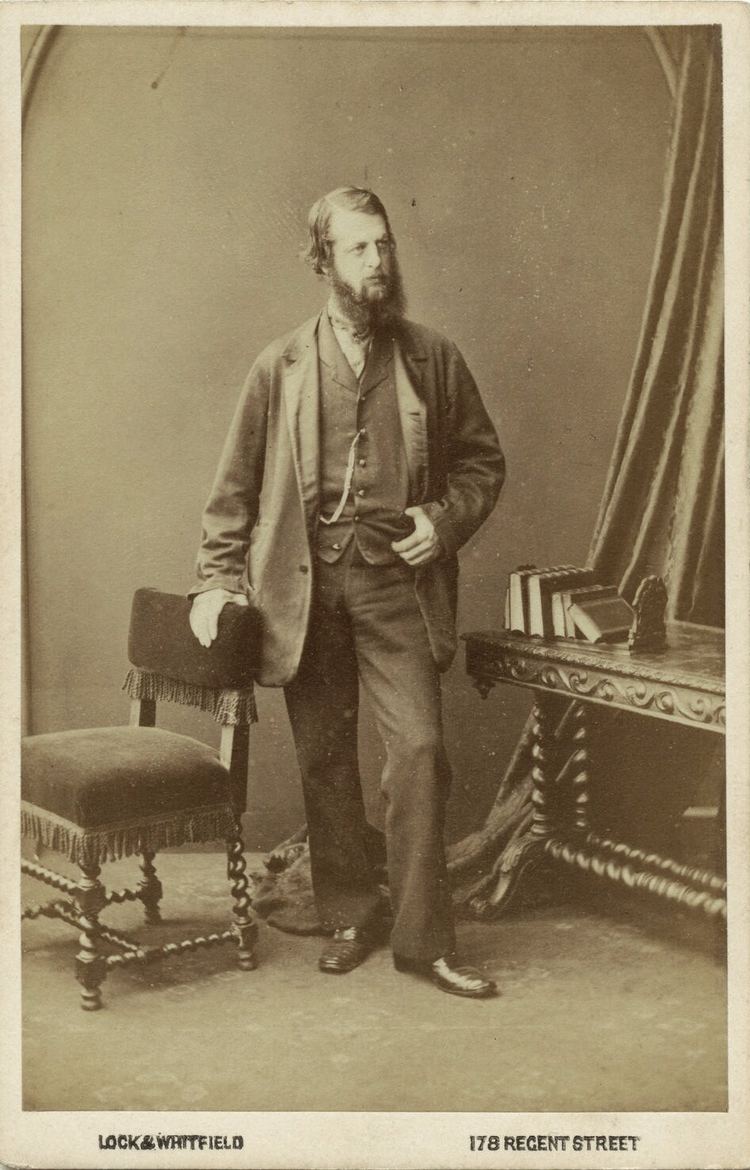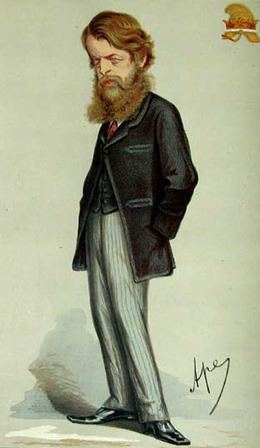Name George 3rd | ||
 | ||
Parents Harriet Sutherland-Leveson-Gower, Duchess of Sutherland Children Cromartie Sutherland-Leveson-Gower, 4th Duke of Sutherland Grandchildren Lady Rosemary Leveson-Gower Similar People Millicent Leveson‑Gower - Duchess, Elizabeth Campbell - Duchess, Georgiana Howard - Countess | ||
George Granville William Sutherland-Leveson-Gower, 3rd Duke of Sutherland KG FRS (19 December 1828 – 22 September 1892), styled Viscount Trentham until 1833, Earl Gower in 1833 and Marquess of Stafford between 1833 and 1861, was a British politician from the Leveson-Gower family.
Contents
- Background
- Political career
- Military positions and honours
- Stafford House committee
- Role in the Highland Railway
- Mont Cenis Railway Company
- Family
- References

Background
Sutherland was the son of George Sutherland-Leveson-Gower, 2nd Duke of Sutherland. He was born at Hamilton Place, London, and was educated at Eton College and King's College London.
Political career
Sutherland was Liberal Member of Parliament for Sutherland from 1852 until he succeeded his father as Duke in 1861.
He took part in a number of state occasions. He was one of the British delegation to the coronation of Tsar Alexander II of Russia in 1856, hosted the public visit by Garibaldi to Britain in 1864, attended the opening of the Suez Canal in 1869, and accompanied the Prince of Wales (later Edward VII) on his state visit to India in 1876.
He was Lord Lieutenant for the county of Cromarty from 1852 to his death.
Military positions and honours
Sutherland was Colonel of the Sutherland Regiment of Highland Volunteers from 1864 to 1882, and of the 20th Middlesex Rifle Volunteer Corps (Railway Rifles) in 1867. He was awarded Honorary Membership of the Institution of Engineers and Shipbuilders in Scotland in 1859. He was made KG in 1864, and FRS in 1870. He was a Knight Grand Cross of the Order of the Redeemer of Greece.
Stafford House committee
Sutherland chaired a committee that organised charitable work to help those involved with the Turko-Russian and Zulu wars.
Role in the Highland Railway
The Third Duke played a key role in the early history of the Highland Railway, being a founder board member of the company and contributing extensively towards the Sutherland Railway, building the Duke of Sutherland's Railway out of his own pocket and also supporting the Sutherland and Caithness Railway. The Highland Railway operated these lines, absorbing them in 1884.
Mont Cenis Railway Company
He was President of the Mont Cenis Railway Company which built the first Fell railway and operated it from 1868-1871 to provide a temporary route over the Alps for rail passengers from Calais to Brindisi until the completion of the Fréjus Rail Tunnel.
Family
He married, firstly, Anne Hay-Mackenzie (1829–1888), later created Countess of Cromartie in her own right, on 27 June 1849, at Cliveden House in Buckinghamshire. They had five children:
On the death of Anne in November 1888, Sutherland married, in February 1889, Mary Caroline Blair, nee Michell, the daughter of Rev. Richard Michell, DD, and widow of Captain Arthur Kindersley Blair, formerly of the 71st Highland Light Infantry. Blair resigned his commission in the Highlanders in 1861 and worked as a land agent and business manager for Sutherland; Mrs. Blair became Sutherland's mistress, and although Blair's death in 1883 was officially recorded as accidental, there was considerable speculation, at the time and later, that it may have been suicide or even murder.
Sutherland was estranged from Anne for many years before her death, and the marriage, less than four months after her death in November 1888, caused a scandal, the conventional minimum period between the death of a spouse and remarriage being one year. The Duke and Mrs. Blair were married on 4 March 1889 at 11:00 a.m., with the Bishop of Florida, Edwin Garner Weed, officiating. The 3rd Duke of Sutherland died, aged sixty-three, at Dunrobin Castle, and was buried on 29 September 1892 at Trentham in Staffordshire. Shortly before his death, Sutherland effectively disinherited his natural heirs and tried to leave all his money to his second wife, who was later found guilty of destroying documents and was imprisoned for six weeks. The family later made a substantial settlement in her favour, enabling her to build Carbisdale Castle between 1906 and 1917. Prior to this, she had resided at Sutherland Grange at Dedworth adjoining Windsor in Berkshire.
Sutherland's widow, known as Duchess Blair, married thirdly on 12 November 1896 (sep 1904) as his second wife Sir Albert Kaye Rollit (1842–1922), MP for Islington South. She enjoyed an income of £100,000 until her death according to one source.
